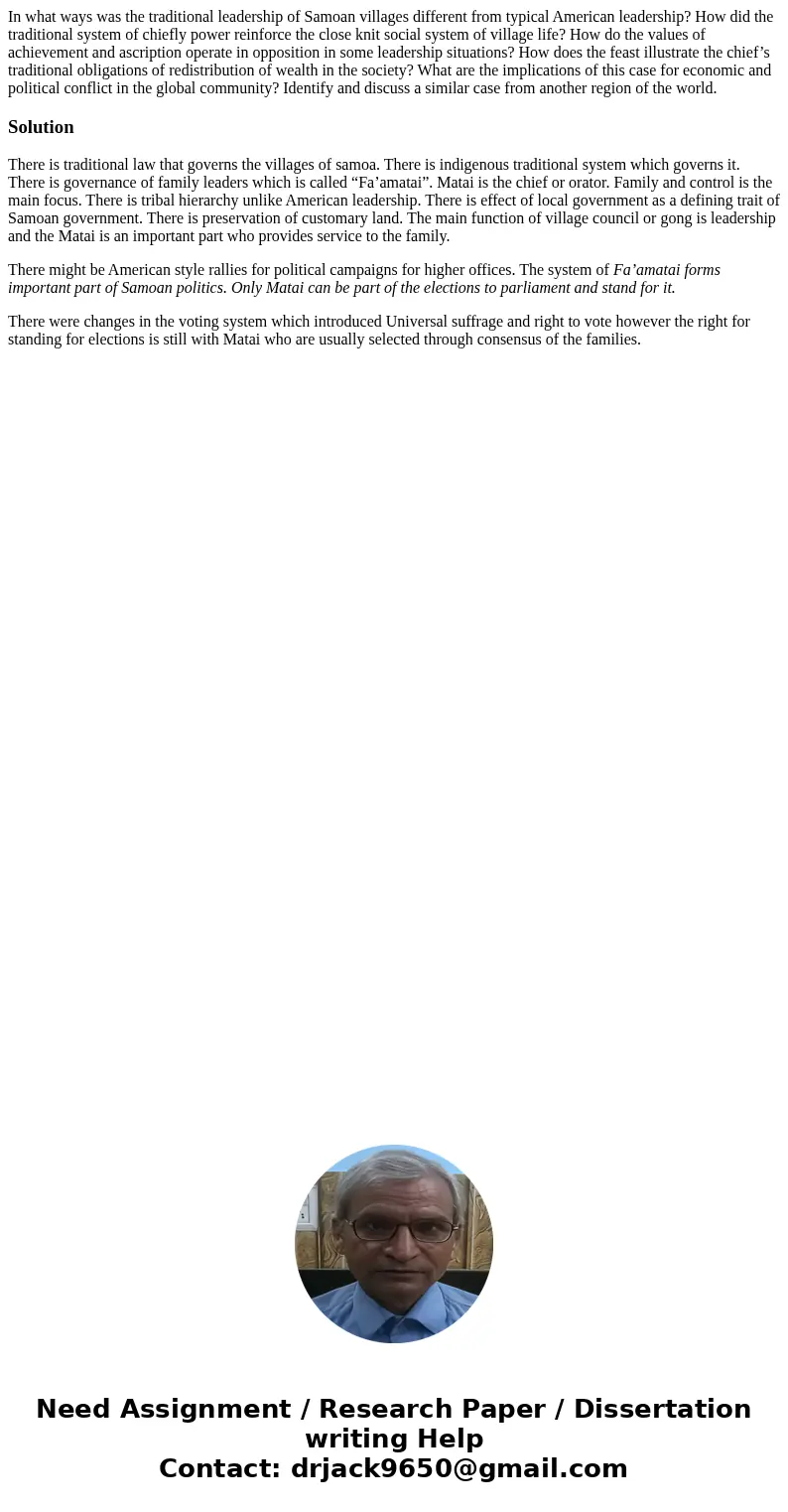In what ways was the traditional leadership of Samoan villag
In what ways was the traditional leadership of Samoan villages different from typical American leadership? How did the traditional system of chiefly power reinforce the close knit social system of village life? How do the values of achievement and ascription operate in opposition in some leadership situations? How does the feast illustrate the chief’s traditional obligations of redistribution of wealth in the society? What are the implications of this case for economic and political conflict in the global community? Identify and discuss a similar case from another region of the world.
Solution
There is traditional law that governs the villages of samoa. There is indigenous traditional system which governs it. There is governance of family leaders which is called “Fa’amatai”. Matai is the chief or orator. Family and control is the main focus. There is tribal hierarchy unlike American leadership. There is effect of local government as a defining trait of Samoan government. There is preservation of customary land. The main function of village council or gong is leadership and the Matai is an important part who provides service to the family.
There might be American style rallies for political campaigns for higher offices. The system of Fa’amatai forms important part of Samoan politics. Only Matai can be part of the elections to parliament and stand for it.
There were changes in the voting system which introduced Universal suffrage and right to vote however the right for standing for elections is still with Matai who are usually selected through consensus of the families.

 Homework Sourse
Homework Sourse